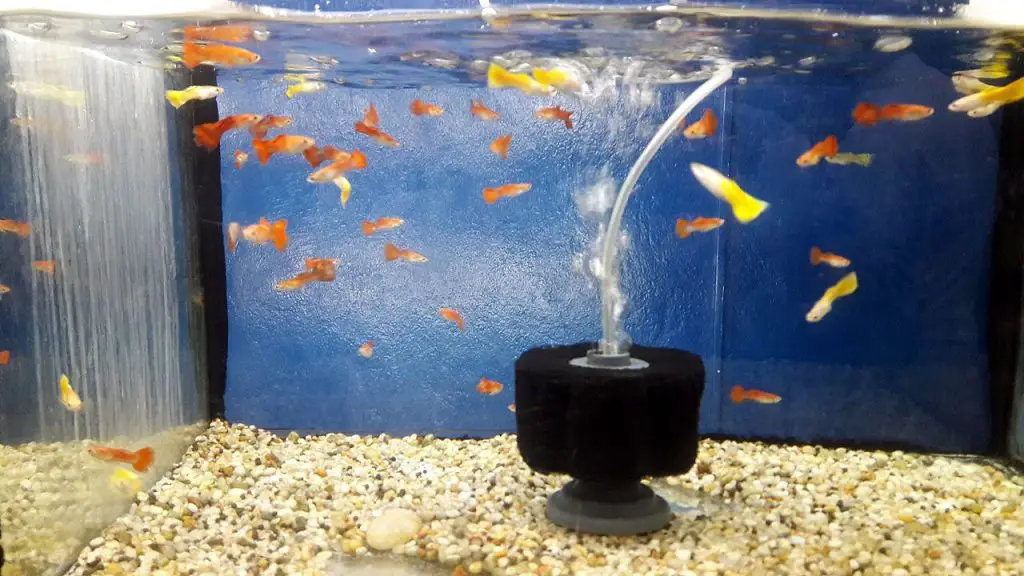Keeping a clean and healthy aquarium is essential for the well-being of your fish and aquatic plants. Taking care of your aquarium filter is crucial for ensuring optimal water quality. In addition, understanding the appropriate frequency for changing your fish tank filter can help create a stable and comfortable environment for your aquatic pets.
Different types of aquarium filters require various maintenance frequencies. For example, mechanical sponge filter media should be cleaned regularly and replaced every 3-6 months. Biological filters also have a similar lifespan. On the other hand, chemical filters should ideally be changed every month or at least after two months.
Types of Fish Tank Filters
Fish tank filters are essential for maintaining a healthy aquatic environment for your fish. They help to remove waste, excess food, and harmful chemicals from the water. There are three main types of aquarium filters, each with its unique filtration method: Mechanical, Chemical, and Biological. We will explore each of these filter types in more detail below.
Mechanical Filters
Mechanical filtration involves physically removing debris and particulate matter from the water. This is typically accomplished using filter media such as sponge, foam, or filter floss. These porous materials allow water to flow through while trapping solid particles.
Regular maintenance is essential for mechanical filters, as these materials can become clogged over time, reducing efficiency. To keep your mechanical filter working at its best, rinse or replace the filter media every 3 to 6 weeks.
Chemical Filters
Chemical filtration involves using chemical media to remove impurities and harmful substances from the water. These substances can include ammonia, nitrite, nitrate, and other organic compounds that negatively impacting water quality.
Common chemical filter media types include activated carbon, zeolite, and ion exchange resins.
Regularly changing the chemical filter media is crucial, as it loses effectiveness over time. Therefore, replace the chemical filter media every month or every two months at the latest.
Biological Filters
Biological filtration relies on beneficial bacteria to break down harmful waste products in the water. These bacteria convert ammonia and nitrites into less harmful nitrates through the nitrogen cycle. Biological filter media include ceramic rings, sponges, and bio-balls, which provide a surface for the bacteria to colonize.
Biological filters need less maintenance than other types, with ceramic or sponge-based filters typically being replaced about twice a year. However, monitoring water parameters is crucial for maintaining the efficiency of the bacterial colony.
Frequency of Changing Filters
In this section, we discuss the ideal time intervals for changing or maintaining different types of aquarium filters:
Mechanical Filter Replacement
Mechanical filters, such as sponge filter media, are essential in trapping solid debris in the aquarium.
To ensure proper functionality and water clarity, these filters need regular maintenance. Therefore, it is good practice to clean them periodically, and proper cleaning can extend their lifespan to about 3-6 months before requiring replacement.
Chemical Filter Replacement
Through adsorption, chemical filters remove impurities and harmful substances like ammonia and nitrate from the water. It is ideal to change the chemical filter, such as activated carbon or Zeolites, every month or, at the least, every two months. However, in specific cases, like using Zeolites, you may need to change them every 2-4 weeks and monitor ammonia levels in the tank.
Biological Filter Maintenance
Biological filters host beneficial bacteria that break harmful substances into less toxic ones. These filters do not require frequent replacement; their maintenance primarily involves preserving well-established bacterial colonies. It is essential to avoid cleaning them with tap water, which may contain chlorine that could kill the beneficial bacteria. When necessary, gently rinse them in the tank water removed during a water change to preserve the bacterial colonies.
Factors Affecting Filter Maintenance
Several factors can influence how often you change your fish tank filter. Understanding these factors will help you keep your aquarium in optimal condition.
Fish Tank Size
The size of your fish tank plays a significant role in determining the frequency of filter maintenance. Larger tanks usually accumulate waste more slowly, requiring less frequent filtration changes. Smaller tanks, on the other hand, require more frequent filter changes due to their smaller water volume capacity and rapid accumulation of waste.
Fish Population
The number and size of fish in your aquarium directly impact the waste produced. A higher fish population will generate more waste, putting extra strain on your filter and requiring frequent maintenance. Consider reducing the fish in your tank or upgrading to a larger tank size if this becomes an issue.
Type of Fish
Different fish species have varying waste production rates. Some fish, such as goldfish, produce more waste than others. Be mindful of the fish species in your aquarium and account for their specific needs when establishing a filter maintenance schedule.
Type of Filter Being Used
Filter maintenance frequency also depends on the type of filter being used. Some filters, like hang-on filters, need cleaning every few weeks, while others may require monthly or more frequent filter media changes. Consult your filter’s manufacturer guidelines for specific maintenance instructions.
Signs Your Filter Needs Changing
Several indicators indicate it’s time to change or clean your fish tank filter. Paying close attention to these signs will help keep your aquarium healthy and maintain the water quality.
1. Reduced water flow: A noticeable decrease in water flow is often the first sign that your filter needs attention. This may be due to debris build-up or the growth of beneficial bacteria, which can clog the filter media. Regularly rinsing the sponge-based filter cartridge every 3 to 6 weeks can help prevent clogging.
2. Unpleasant odors: A foul smell from your fish tank can indicate that the filter is not working correctly and that waste materials are not efficiently removed from the water.
3. Cloudy water: this can signal that the filter media needs to be changed, especially if you have an external filter. Replace the filter media when it starts breaking down or when the water turns hazy.
4. Algae blooms: While algae growth is natural in an aquarium, excessive algae growth can signal an issue with your filtration system. Maintaining your filter and changing the media as required will help prevent algae blooms.
5. Unhealthy or stressed fish: If your fish exhibit signs of stress, such as gasping at the water surface or hiding in corners, it could indicate poor water quality due to an ineffective filter. Regular filter maintenance is crucial to ensure a healthy environment for your fish.
Tips for Filter Maintenance
Maintaining your fish tank filter effectively requires a balance between cleaning and preserving the beneficial bacteria that contribute to biological filtration. Regular maintenance will help keep your aquarium healthy and functioning correctly. Here are a few tips to get you started:
Check the Filter Regularly: Inspect your filter at least once a month to ensure it’s working correctly and not clogged with debris. Observe the flow rate and adjust accordingly if needed. A reduced flow rate could indicate a clogged filter that requires cleaning.
Mechanical Filter Media: Mechanical filter media, such as sponge filters, should be cleaned every few weeks or at least once a month. Gently squeeze the sponge in a bucket of used tank water to remove debris and preserve beneficial bacteria. Replace the sponge after three to six months of use, as mentioned.
Chemical Filter Media: Replace the chemical filter media, such as activated carbon, every month or after two months at the latest, as suggested. Over time, the effectiveness of the chemical media diminishes, and it could potentially leach absorbed contaminants back into the water if not replaced timely.
Biological Filter Media: Avoid completely replacing biological filters, as they contain helpful bacteria for waste breakdown. Gently clean them with used tank water when needed to preserve the bacteria.
Clean In-Tank Power Filters: In-tank power filters should be cleaned similarly to hang-on filters. Clean them every few weeks or at least once a month.
By following these tips and performing regular filter maintenance, you can ensure a healthy and stable environment for your fish.
Conclusion
In summary, the frequency of changing your fish tank filter depends on various factors, such as the type of filter, the size of your tank, and the number of fish. Some resources recommend changing the filter every two weeks, while others suggest cleaning it every 3-6 weeks. Regularly checking your aquarium’s water quality will help you establish a suitable filter change schedule for your setup.
Different filter media types have different lifespans. For instance, activated carbon may last for months to years, while sponge filters in internal filters can last for several months. Therefore, it’s crucial to follow the manufacturer’s guidelines and consider the needs of your aquarium to keep it clean and healthy for your fish.
Maintaining proper filtration is an essential aspect of aquarium care. Regularly cleaning and changing your fish tank filter will help maintain a balanced and stable environment for your aquatic pets. In addition, always pay close attention to your aquarium’s water quality and observe your fish for any signs of stress or disease related to poor filtration.



